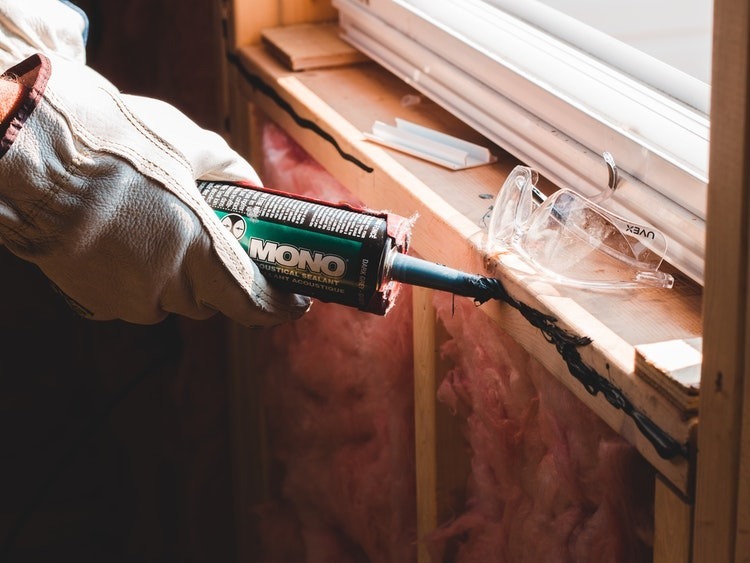Seven Ways to Improve Your Garage's Energy Efficiency

The attached garage is a modern innovation that we tend to take for granted. However, it’s not just the convenience of the garage we take for granted. Most of us also assume there isn’t much we can do about the fact that the garage is ice-cold in the winter and oppressively hot in the summer. But there is. In this article, the garage door repair experts at C & M Garage Door will look at seven ways you can make your garage more energy-efficient and livable.
A cold garage is not just a minor inconvenience, it's also responsible for higher energy bills and a bigger carbon footprint. An ice-cold garage also takes its toll on your car and can ruin things you store there. Here are seven ways to improve the energy efficiency in your garage.
1: Insulate the door
As the premier overhead door repair company in Loveland, we come face to face with dozens of local garage doors every day and we're always surprised by how many of them are completely uninsulated. An uninsulated garage door sucks heat out of the garage in the winter and allows heat to penetrate during the summer. Adding insulation to the inside of the garage door is a cheap and effective way to negate a large percentage of that heat transfer. And don’t worry. It’s on the inside of the door so no one will see it.
2: Insulate the walls in the garage
When a developer builds a house they keep an eye out for ways they can save money, with the garage being a frequent target for the accountant’s wrath. People don’t live in the garage after all so why insulate it? That’s all very well and good except that the developer’s cost-cutting measures are costing you money as the uninsulated garage siphons heat from the rest of the house. Adding fiberglass batt insulation to the walls is a quick and easy way to make your garage significantly more energy-efficient, and warmer.
3: Seal up the cracks in the concrete slab
Concrete is a lousy insulator and if the concrete slab in your garage is riddled with cracks its ability to retain heat is compromised even more. For just a few bucks you can pick up a tube of concrete sealant and put an end to heat loss through those cracks. Sealing up any cracks in the slab will also help prepare it for our next suggestion.
4: Install interlocking flexible tiles
As we said, concrete is a poor insulator. Walking on the concrete slab in the garage in the winter can feel like walking on an ice cube. But it doesn’t have to be that way. By installing interlocking flexible tiles in the garage you will make the garage warmer, more comfortable, and let's face it, more attractive. These tiles will stand up to your car tires and are also slip-resistant. And while they may be stained by dripping oil or other substances the stained tile can simply be removed and a clean one popped in to replace it.
5: Seal around the door between the garage and the house
It only takes a small crack to cause major heat loss. If the door between your garage and house is not properly sealed all the way around your expensive heated air can escape at an alarming rate. An easy way to check if there are leaks around the door is to turn on the lights on one side and then stand on the darkened side. If you can see light around the door then it needs to be sealed up. All it takes to rectify the situation is some weatherstripping around the sides and top, and a draft stopper to seal the space between the bottom of the door and the threshold.
6: Upgrade your garage windows
The garage window is an often overlooked source of heat loss. If the house is a bit older there is a good chance the garage window is not only leaky but made of single pane glass. If that’s the case you can go a long way toward making your garage more energy efficient by replacing the old window with a modern double or triple pane window. Such windows are not cheap. But the energy you save in the long run should offset the cost.
7: Install a new garage door
Even if you haven’t suffered broken garage door springs, or a stuck garage door you might still benefit from replacing your current garage door with a more energy-efficient model. First off, a brand new insulated garage door will negate the need to insulate your current door. Second, today's garage door openers use less power than before to lift and lower the door. And third, they also use as much as 75% less power when in standby mode. A new garage door will also be quieter and can be integrated with other smart home features.
For All Your Loveland Garage Door Repair Needs Call C & M!
Making your garage more energy efficient will provide benefits both obvious and subtle. But whether you want to install a more energy-efficient garage door or you need any type of repair or maintenance work done don't bother searching for "garage door repair near me", instead just call C & M Garage Door at 970-663-7335. We’re the garage door experts.
